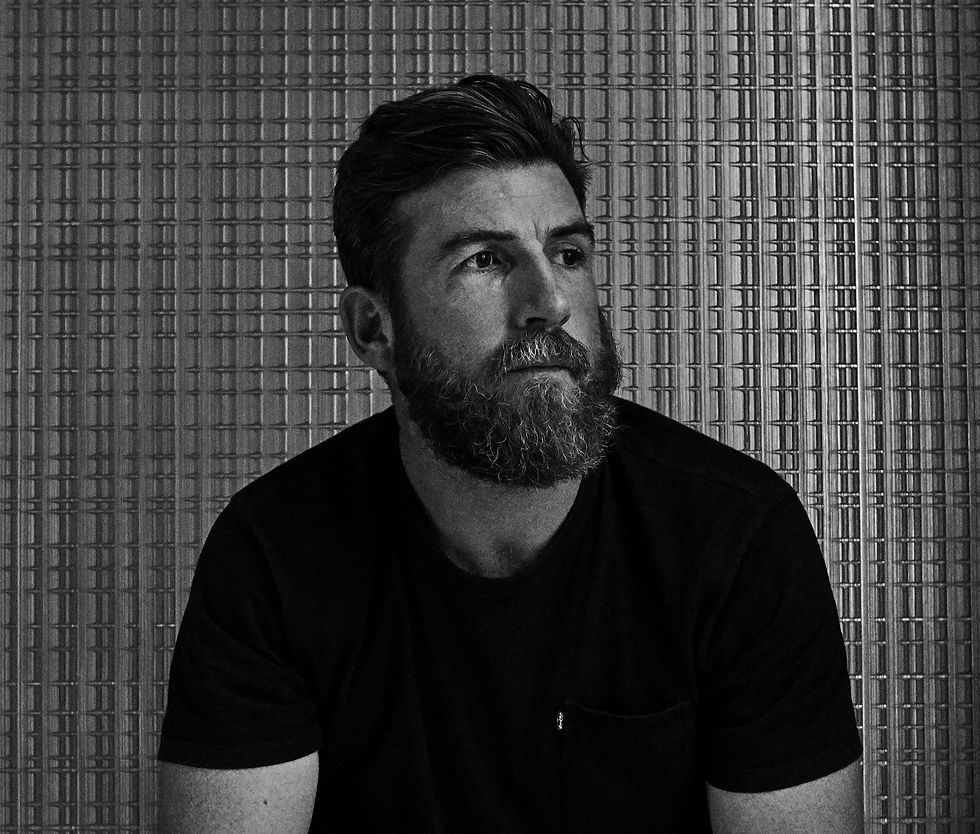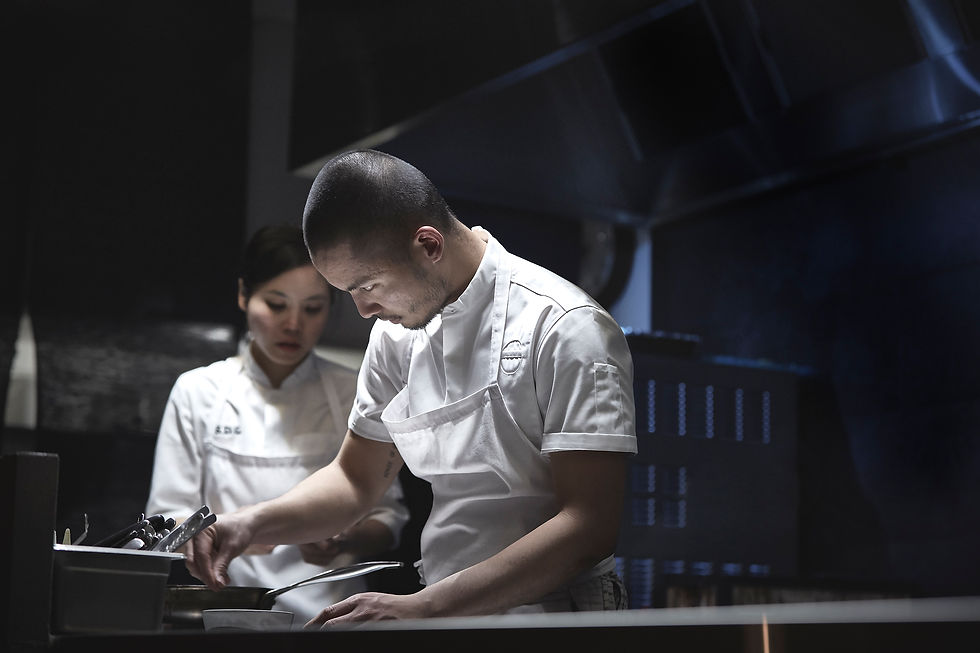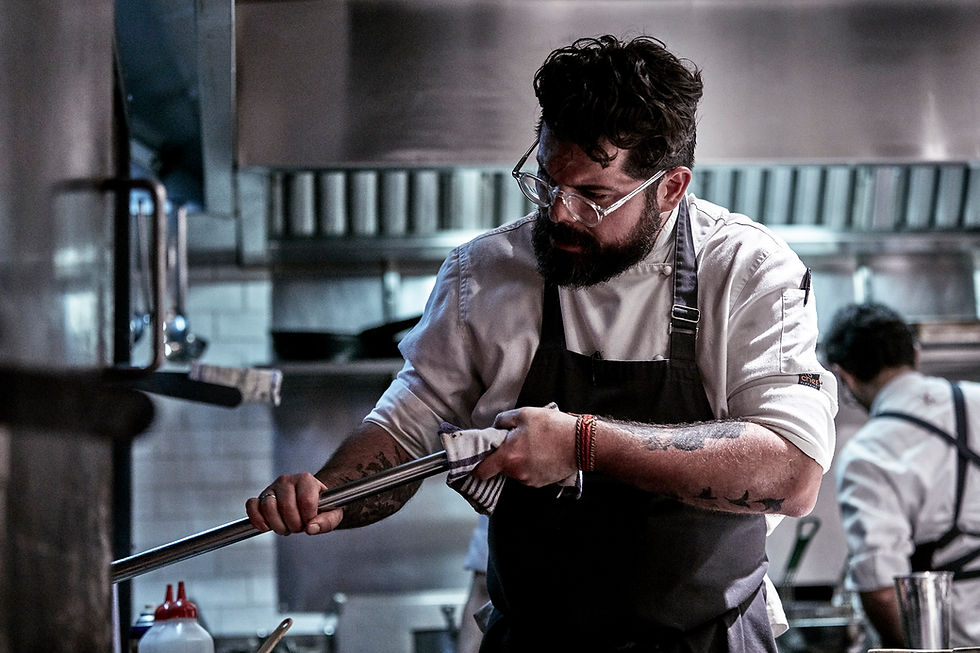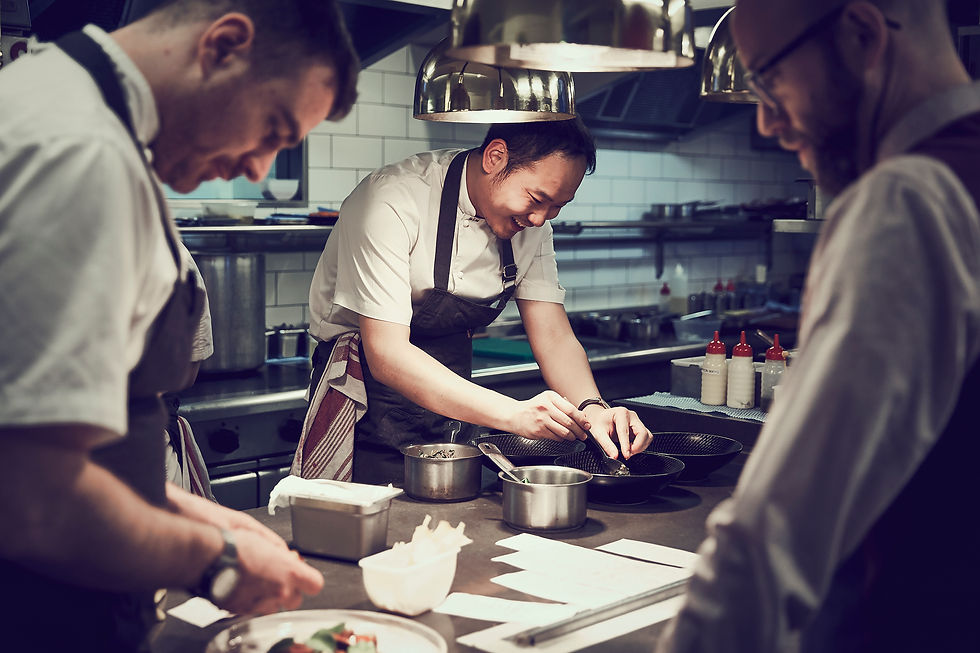Deep Cuts with Thom Rigney
- Rebecca Mackinnon
- Aug 21, 2019
- 4 min read

Ansel Adams, revered landscape photographer, isn’t the most obvious inspiration behind Thom Rigney’s photographs. What could digital shots of professional kitchens owe to the man who first captured the vast skies of Yosemite, using tin plates and cadmium?
Turns out, quite a lot. When you place their oeuvres side by side, sure: the subject matter is different, but the depth, the light, the intimacy, are of a kind.
Of course, the scale Rigney seeks to capture is smaller, physically, as he shoots human beings and not mountain ranges, but the force of his work is undeniable. From smoky images of a Bali street vendor’s kitchen to the glossy backdrop of Cutler & Co.’s high-end operation, his work is bittersweet, one part joy, one part exhaustion, and indicative of something both ephemeral and elemental about what it means to be a creative who loves food. And you can’t help but notice that these are not like other kitchen or chef shots – there’s something deeply personal about the faces of chefs and staff lost in their work, or in a moment of candid repose.

Ansell Adams
It’s this newness, and difference, the hunger to explore things in unusual ways, that seems to drive Rigney. Another unexpected hero is Sebastião Salgado, the Brazilian documenter of illegal mining activities and overwhelming human desperation; his Dali-esque images inspire Rigney to capture familiar images in unfamiliar fashion. However, part of the problem with photography these days is how difficult it is to find that new story, due to the sheer oversaturation of imagery available to us now – even those submitting work to professional competitions can tip into the trite.
“If we see one more winning entry of a malnourished Aboriginal man with a kid,” says Rigney, frustrated. “Then that’s the only story people think there is to tell about Indigenous Australians. For some reason this is the only story we tell now – it’s like to be meaningful, there has to be some tragedy. It’s banal.”

This desire to subvert ‘the only story’, to lean into grit and authenticity, was a reaction to the overexposed hyperrealism of the booming cooking show industry. “I launched the Kitchen Archive at that time that celebrity cooking shows were becoming more popular,” he says. “A lot of chefs were talking about how it wasn’t real, so I decided to capture them in their real moment. There was so much clichéd imagery about – the chef with their arms crossed.”
When Instagram became ‘a thing’, Rigney saw the opportunity to showcase his work in a totally new way. Street food was his re-entry into the world of food: “it was this avenue to explore creativity, as well as a way to get my work out there.” And it took off. “When I got to Mexico, I met someone who had seen the images I’d been posting, and he took me down to the cantina that he ran. I got to meet everyone – his father, his uncle, and they all ran this stand in this little neighbourhood in Mexico City.”

Thom Rigney - Mexico City Cantina
'A lot of chefs were talking about how it wasn’t real, so I decided to capture them in their real moment. There was so much clichéd imagery about – the chef with their arms crossed.'

Thom Rigney - Brixton
Rigney has now shot in some of the most famous kitchens in Australia – Lume, Cutler & Co., Cumulus – all captured in gentle steam-suffused light. His subjects’ heads are tilted away from cameras, brows are furrowed, sweat is wiped on grimy aprons. The geometry of the kitchen is captured, the layering between the people and equipment, and the intricate points of focus like the sharp edge of an oven.

“It’s documentary style,” says Rigney. “I might get them to stand together for a nice portrait or something, but I don’t get them to flip anything or do anything specific. As soon as you do that, it changes what I am trying to achieve, the natural uniqueness of it is gone.” Some kitchen staff find this a challenge – they’re so used to being asked to work through the process of creating a dish, from prep to plating, with glistening shots of the ingredients at every step, that it can take a while for them to acclimatise to Rigney’s presence and just be themselves.
Sometimes, he’ll throw the camera up in front of his face without taking a shot, to see how they react, to wait for the dust to settle. In these moments, that’s when the staff relax and he can capture some of the more candid shots. These are the moments where you’ll see a head chef mentoring a young sous-chef, hand on a shoulder; an undefended grin over the glow of flames.

It’s ungarnished and unglamorous – there’s a delicious sense of catching a glimpse behind a veil. His work now encompass Tokyo, Osaka, Singapore, Brixton Markets and more, and these images, in the street kitchens of Bali, at the Tsukiji Fish Markets, that Mexican cantina, hold the same rawness and unguarded truth. A favourite series is the Ibu Oka 3 set of photographs, taken in Ubud, Indonesia. The series oscillates between the most gorgeous of portrait shots, dynamic images of open fires roasting gleaming hogs, a still life of a well-used knife, and quiet images such as that of a women sorting chillies, a sliver of light falling across her body, caught in a completely unselfconscious moment.
'It’s not about the food – it’s bigger than that,'

Thom Rigney - Bali
“It’s not about the food – it’s bigger than that,” finishes Rigney. Looking at his photographs, this is certainly the overwhelming sense that a viewer will walk away with. In most of his scenes, there’s no food at all: “There’s the boss, the wait staff, the sommelier, and they’re all engaged in this one moment and it’s just the crew, the story of this unique place.”
Unlike most kitchen photographers, the food is not the story – the people are. And capturing that story in one image – no audio cues, no moving picture – is as raw and real a piece of art as those created by Adams, painted with acid and light.





Comments